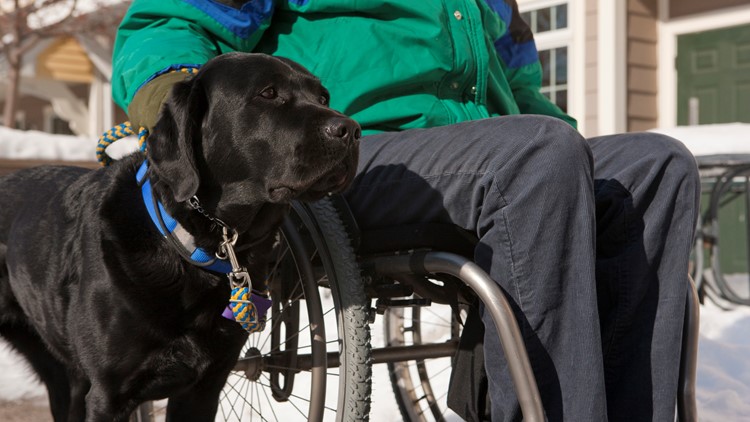A post about how you're supposed to interact with service dogs has gone viral and has many wondering if what it lays out is true.
A viewer sent VERIFY a photo that showed the following tweet by @JustJimWillDo, and linked to another post that explained "if a service dog without a person approaches you, it means the person is down and in need of help."
THE QUESTION:
So is this true?
THE ANSWER:
Partially.
Experts we spoke to told us it’s likely one of two cases.
The first scenario is that the handler needs assistance and you should follow the dog to help. Or scenario two, it’s possible the dog is simply lost or got away from its handler. In either case, you should get involved.
WHAT WE FOUND:
The Americans With Disabilities Act (ADA) defines service animals as dogs that are individually trained to do work or perform tasks for people with disabilities.
Some, it explains, are trained to treat people with disabilities that could cause their animal to seek help.
VERIFY spoke with Patricia Hairston, from Canines for Service, an organization that provides skilled service dogs for the disabled.
When asked what it means when a service dog approaches without it’s handler, Hairston said "There's one of a couple things: The handler/owner is in trouble or the dog got loose."
In either situation, Hairston said the best course of action is to get involved. She suggested trying to get control of the animal and then, as crazy as it may sound, she says to try talking to the dog.
“Ask it where its person is,” she said. “It may have been trained in such a way so that it will respond to a cue."
Hairston confirmed that some dogs absolutely are trained to go and fetch help when their handler is in need.
The post and its claims are mostly true, but we’re adding the caveat that sometimes it’s possible the dog may just be lost.
What is VERIFIED, is that it's important to interact with the dog, look to see if you can find who it belongs to and in the event that you cannot find the person, stay with the dog and contact a medic immediately.
For more information on service dogs, please check out the ada.gov website.



